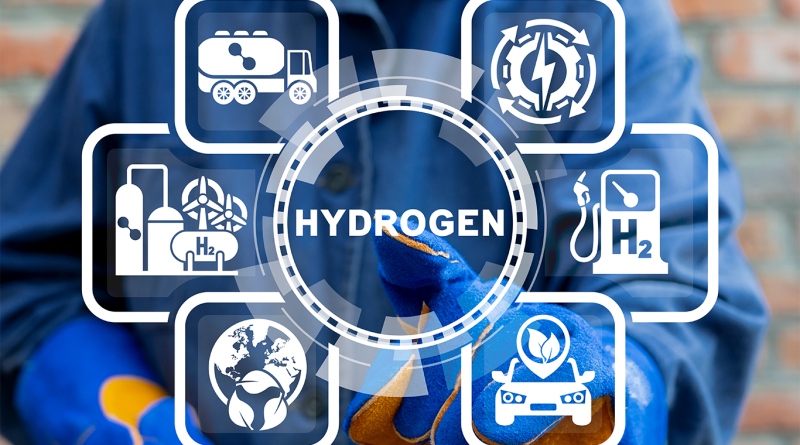Compressed Hydrogen: A Game-Changer in Energy Supply Chains?
As the world intensifies its efforts to mitigate climate change, hydrogen has emerged as a pivotal component of the global energy transition. Regarded as a versatile and clean energy carrier, hydrogen offers the potential to decarbonize a range of industries, from transportation and power generation to heavy manufacturing. Among the various hydrogen transport and storage methods, compressed hydrogen is gaining traction as a highly efficient and scalable solution.
The recent study by Provaris, a prominent player in renewable energy transportation, sheds light on the advantages of compressed hydrogen over its counterparts—liquid hydrogen and ammonia—particularly in terms of energy efficiency, cost-effectiveness, and infrastructure compatibility.
Understanding Compressed Hydrogen: Benefits and Challenges
Compressed hydrogen is stored in its gaseous state under high pressure, typically between 350 to 700 bar. Unlike liquid hydrogen, which requires extremely low temperatures (-253°C) to remain in liquid form, or ammonia, which is a derivative that must be converted back into hydrogen, compressed hydrogen is simpler to produce and handle. The Provaris study indicates that compressed hydrogen offers several advantages in the supply chain, particularly in terms of energy efficiency and cost.
One of the primary benefits of compressed hydrogen is its energy efficiency. The process of compressing hydrogen consumes significantly less energy compared to the liquefaction process. According to the study, the energy required to compress hydrogen is approximately 10-15% of the hydrogen’s total energy content, whereas liquefaction can consume up to 30-40%. This reduction in energy consumption translates into lower operational costs and reduced carbon emissions.
Additionally, compressed hydrogen is advantageous in terms of infrastructure compatibility. It can be transported using modified natural gas pipelines and existing tankers, reducing the need for substantial new infrastructure investments. This flexibility makes compressed hydrogen a more feasible option for integrating into current energy systems. However, challenges remain, particularly concerning the high-pressure storage requirements, which necessitate robust and advanced materials to ensure safety and reliability.
Despite these benefits, the adoption of compressed hydrogen is not without challenges. High-pressure storage demands advanced materials and technology to ensure safety and efficiency. The industry must address concerns around leakages, material degradation, and the development of standardized protocols for handling compressed hydrogen at scale.
Compressed Hydrogen vs. Other Hydrogen Forms
The Provaris study provides a comprehensive analysis of the comparative advantages of compressed hydrogen over other forms, such as liquid hydrogen and ammonia. The findings suggest that compressed hydrogen is not only more energy-efficient but also offers a lower-cost alternative for medium to long-distance transportation.
Liquid hydrogen, while advantageous for specific applications that require very high energy density (such as space travel), involves a highly energy-intensive production process. It requires cooling hydrogen to cryogenic temperatures, a process that significantly adds to the overall energy cost. Moreover, the transportation and storage of liquid hydrogen necessitate specialized insulated containers, increasing both complexity and cost.
On the other hand, ammonia is considered a promising hydrogen carrier due to its high energy density and relative ease of transport. However, ammonia must undergo a conversion process to release hydrogen, which is energy-intensive and emits CO2 unless carbon capture technologies are employed. Moreover, ammonia is toxic and requires careful handling, which can be a logistical challenge.
In contrast, compressed hydrogen stands out for its simplicity and cost-effectiveness. It requires fewer conversion steps, thereby minimizing energy loss and reducing overall costs. This makes it particularly suitable for sectors where minimizing operational expenses and ensuring sustainability are critical, such as in the transportation of renewable energy across regions.
The practical applications of compressed hydrogen are already being explored in several parts of the world. For instance, Europe’s hydrogen strategy emphasizes the role of compressed hydrogen in achieving its clean energy targets. The European Union is investing heavily in developing a hydrogen infrastructure that includes pipelines, storage facilities, and distribution networks optimized for compressed hydrogen.
In Japan, the Hydrogen Society Initiative aims to create a fully-fledged hydrogen economy by 2030, with compressed hydrogen playing a central role in transportation and energy storage. Similarly, Australia has committed to establishing itself as a leading exporter of hydrogen, leveraging its abundant renewable energy resources to produce and transport compressed hydrogen to key markets in Asia and beyond.
These examples highlight the growing recognition of compressed hydrogen’s potential to transform the global energy landscape. However, for this potential to be fully realized, concerted efforts are needed to scale up production, improve storage technologies, and develop robust international standards for its transport and use.
Sources:
- Offshore-Energy.biz: Compressed Hydrogen is Energy Efficient Supply Chain, Provaris Study Says
- IEA (International Energy Agency): The Future of Hydrogen Report
- Hydrogen Council: Hydrogen Insights 2023
- European Union: EU Hydrogen Strategy
- US Department of Energy: Hydrogen Program
